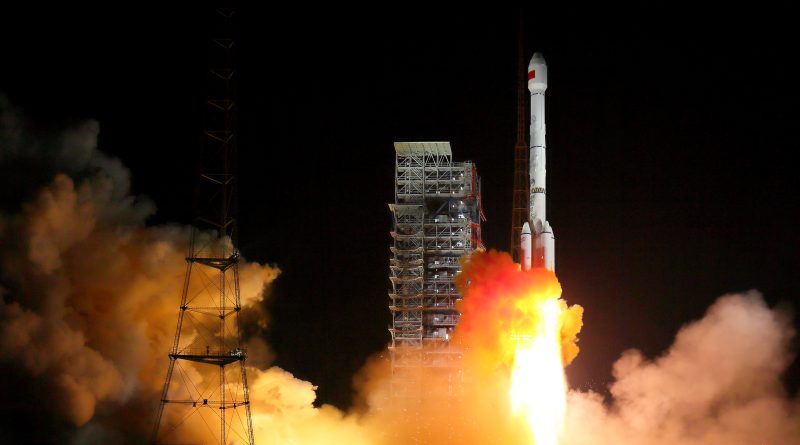Long March 3B Thunders off from China with Beidou Navigation Satellite Pair
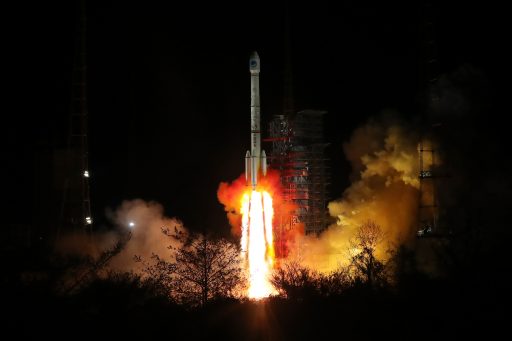
China launched a Long March 3B rocket on Thursday, carrying the next pair of Beidou-3 navigation satellites to join the country’s growing Global Navigation Satellite System set to reach operational strength later this year. Out of nine orbital space launches carried out so far this year by the Chinese, three were in support of Beidou-3 – showcasing the drive behind getting the system into service with up to 18 Beidou craft headed up the hill in 2018.
Thursday’s launch from the Xichang Satellite Launch Center in the Sichuan Province occurred at 17:56 UTC, 1:56 a.m. local time and marked the start of a four-hour ascent mission comprising a climb into a preliminary orbit by the three-stage CZ-3B rocket followed by two burns of the YZ-1 upper stage to dispatch the Beidou-3 MEO-9 and MEO-10 satellites directly into their operational orbit 21,500 Kilometers above the planet. Liftoff was confirmed through local observers present for the launch and an official acknowledgement came forward after the satellites havd arrived in their target orbit.
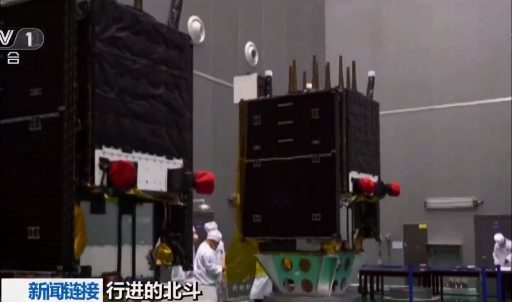
China remains at pace with the United States so far this year with Thursday’s launch marking the country’s ninth orbital space launch in 2018, taking them one ahead of the U.S. – but only for 20 hours as a Falcon 9 gears up for liftoff from California on Friday carrying the fifth set of Iridium-NEXT satellites. 2018 is expected to become China’s busiest space flight year to date and one particular item of focus is the country’s Beidou navigation constellation that has been available as a regional navigation system since 2009 and is now being expanded to full global coverage.
Thursday’s Beidou-3 mission followed up on dual-satellite launches on January 11 and February 12 and brought the total number of Beidou-3 satellites to thirteen, joining fifteen Beidou-2 satellites that remain in operation. Still on the manifest for this year are four or five dual launches of Medium Earth Orbit satellites atop Long March 3B rockets, the launch of the first Beidou-3G satellite toward Geostationary Orbit and the launch of the third Beidou-3 satellite headed into an inclined Geosynchronous Orbit.
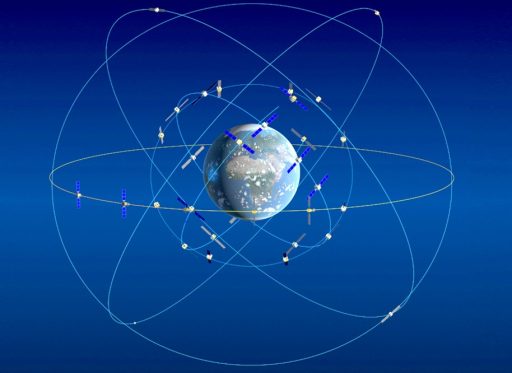
The overall goal for this year will be bringing the Beidou constellation to an initial operational capability for global navigation services before full operational capability is reached in 2020 when all constellation slots will be filled. According to China’s Satellite Navigation Office, the finished Beidou constellation will consist of five Beidou-G satellites parked in Geostationary Orbit, three Beidou-I satellites in 55-degree Geosynchronous Orbits and 27 satellites in Medium Earth Orbit, flying in three orbital planes with eight active members and one spare in each plane.
The combination of GEO, IGSO and MEO satellites is unique among the world’s navigation satellite systems: the U.S. GPS, Europe’s Galileo and Russia’s Glonass system operate solely from Medium Earth Orbit with Geostationary Augmentation Satellites supplying correction data for high-precision applications; India’s Navic only operates from GEO; and Japan takes GPS as a basis and augments its availability and accuracy via three satellites in a specialized Quasi-Zenith Orbit.
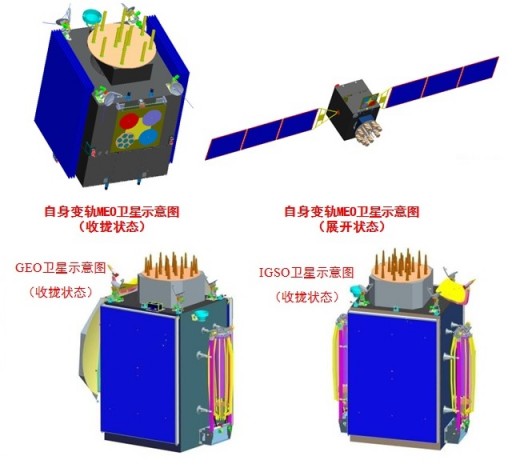
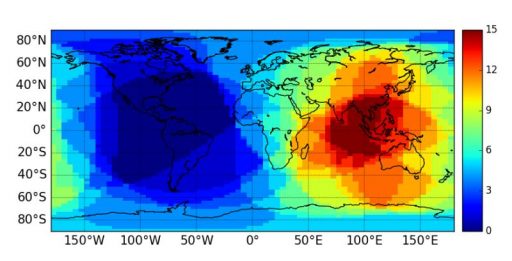
China’s home-grown navigation system started out in the first half of the 1980s when the first proposals for a navigation satellite constellation were made but the program would not see a satellite launched until 2000. Reaching the launch pad after a lengthy development effort, the project was broken down in three major phases, starting out as a regional system covering the Chinese mainland before expanding coverage to the Asia-Pacific Region and eventually pushing for global round-the-clock coverage.
The first step was realized with a two-satellite system in Geostationary Orbit that required a ground station to process two-dimensional position data obtained from the two satellites into a three-dimensional product then relayed to the ground-based user terminal. Beidou-2, covering the broader Asia-Pacific region, was inaugurated in 2009 and consisted of five active satellites in GEO plus a limited number of MEO Satellites.
To achieve full global coverage, China planned to expand the MEO constellation to a similar setup as GPS/Galileo while retaining the GEO/GSO segment to provide compatibility with the first generation of ground terminals and to augment the navigation and timing solutions offered by the advanced Beidou-3 system.
The Beidou-3 satellites operating from Geostationary Orbit are built by CAST, the IGSO segment employs two types of satellites supplied by CASC and CAS and the MEO satellites also use two different manufacturers: CAST (MEO-1 through 6) and CAS (MEO-7 through 12). Launches of the first set of MEO satellites from each manufacturer in 2015 and 2016 were classed as in-orbit validation satellites; the same was the case for the IGSO craft and presumably will apply to the Beidou-3G series as well.
>>Beidou-3 Satellite & Constellation Overview
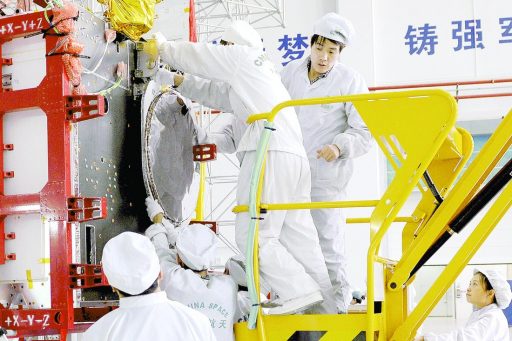
The GEO/IGSO satellites each have two payloads – one for navigation and augmentation as part of Beidou-3 and one to provide compatibility with the previous generation of Beidou satellites. These two are known as the Radio Determination Satellite Service (RDSS) and the Radio Navigation Satellite Service (RNSS), respectively.
MEO satellites flying under Beidou-3 only host the RNSS payload that operates in a similar way as the GPS, Galileo, Glonass and Navic systems – sending coded signals in the L-Band frequency with ultra high timing precision so that receivers on the ground can process three or four different signals in order to calculate the user’s precise position, elevation and speed. Only carrying a single payload allows the MEO satellites to be more compact in size, weighing 1,014 or 1,060 Kilograms per piece (CAST vs. CAS) and permitting dual launches atop Long March 3B/YZ-1 rockets.
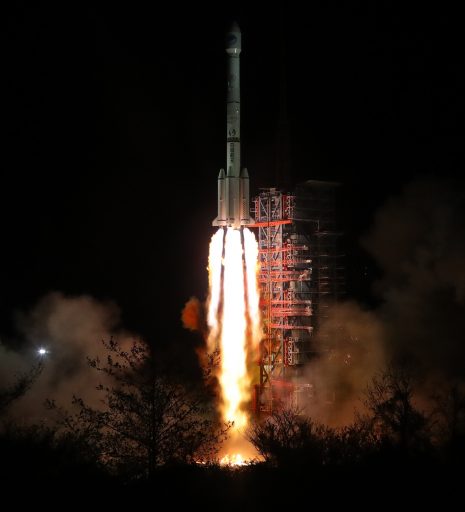
The 56.3-meter tall Long March 3B lifted off at precisely 17:56:04.130 UTC and climbed vertically for a few seconds before aligning itself with a south-easterly trajectory, taking it over the Yunnan, Guizhou and Guangxi provinces, the Gulf of Tonkin, Hainan Island and out over the Pacific Ocean. With its four liquid-fueled boosters and large core stage firing at full throttle, the Long March 3B had a total launch thrust of 604 metric-ton-force as it departed Xichang, en-route to an initial Parking Orbit.
The four boosters, 16.09 meters long and 2.25 meters in diameter, were to fire for two minutes and 20 seconds – each delivering 740 Kilonewtons of additional thrust and burning through 41,100 Kilograms of hypergolic propellants. After separation of the boosters, the vehicle was to continue ascent powered by the stage alone, fitted with a four-chamber DaFY-6-2 engine cluster providing 2,961 Kilonewtons of thrust. The stage stands 24.76 meters tall and holds 186,200 Kilograms of propellants at liftoff enabling it to burn for 158 seconds.
Separation of the stages was planned to occur in hot mode, starting with the ignition of the second stage’s vernier engine and followed by the firing of cutting charges to allow the spent core to be discarded and the second stage to fire up its main engine. The 12.9-meter long second stage, holding 49,000kg of propellants, was expected to burn for nearly three minutes with a total thrust of 742 Kilonewtons.
>>Long March 3B Launch Vehicle Overview
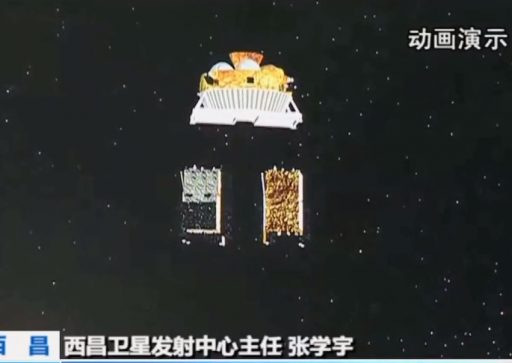
Assuming control of the flight, the third stage was to ignite its YF-75 dual engine cluster that, unlike the other CZ-3B stages, burns Liquid Oxygen and Liquid Hydrogen. Generating 157 Kilonewtons of thrust, the third stage was to burn through 18,200 Kilograms of cryogenics over the course of one or two burns to raise put the stack into an elliptical transfer orbit for separation of the YZ-1 Upper Stage.
The Yuanzheng-1 (Expedition-1) upper stage has been developed as a multi-purpose vehicle capable of executing mission profiles with several engine burns over extended mission durations. Using storable propellants, the main engine of the YZ-1 stage delivers 6.5 Kilonewtons of thrust and supports at least two in-space engine starts – first to finish the parking orbit insertion and setting the proper apogee altitude and again for the circularization after an extended coast phase. Injection of the Beidou-3 satellites is planned directly into their operational orbit nearly four hours after launch.

